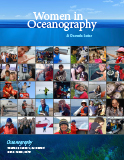Article Abstract
Gender equity in science, technology, engineering, and mathematics (STEM) has remained elusive because there are multiple causes of inequity that interact in complex ways. These causes have been the subject of interdisciplinary research funded by the National Science Foundation's ADVANCE program. Outcomes demonstrate that some barriers to women's retention in faculty and leadership positions in STEM result from individual challenges, such as lack of networks, mentors, and advocates. Some barriers result from interactional challenges among colleagues, such as implicit assumptions about who "does" science. And some barriers are institutional, the product of a system designed for men with families to support their personal lives. Solutions designed by research address one or more of these causes with source-specific interventions. For individual barriers, professional development workshops help make the implicit explicit. For interactional barriers, learning about implicit bias can reduce its impact. For institutional barriers, policy review and reform, such as enacting stop-the-tenure clock and dual-career policies, make the academy more people-friendly. To include as many excellent minds as possible in the STEM enterprise, it is necessary to transform the institution, not "fix the women." Such transformation must be well thought out and purposefully enacted. Still, change is slow: even the best programs will take a decade or more to reap the benefits.

